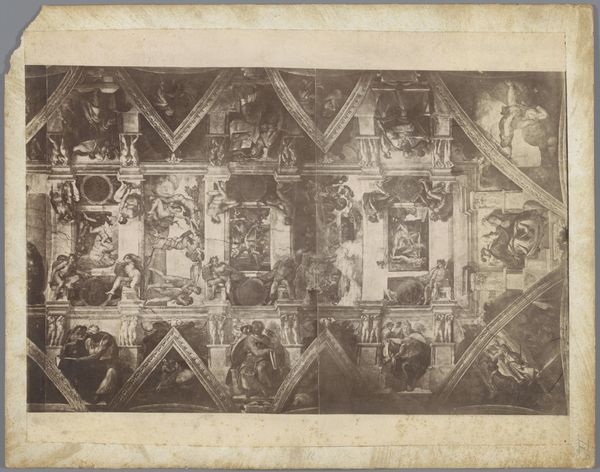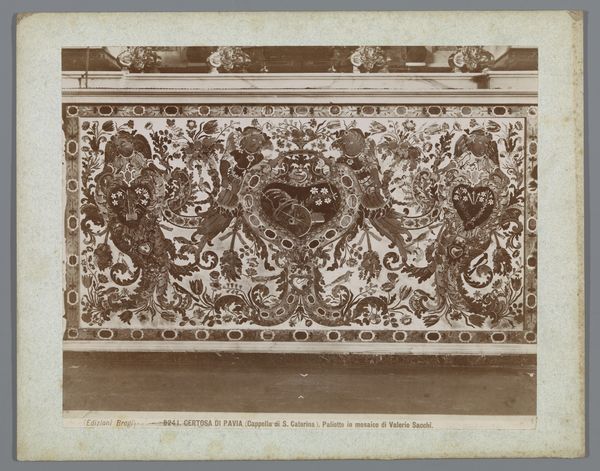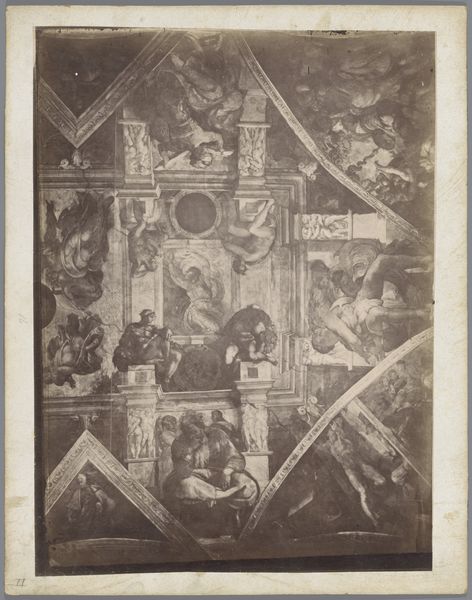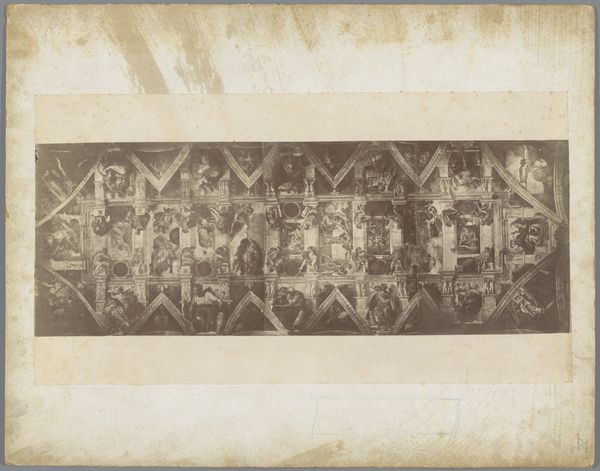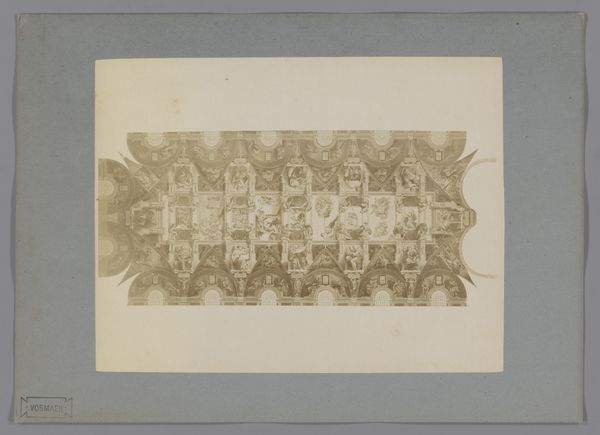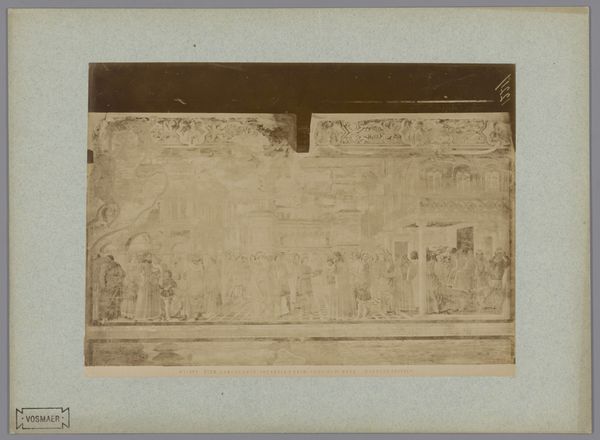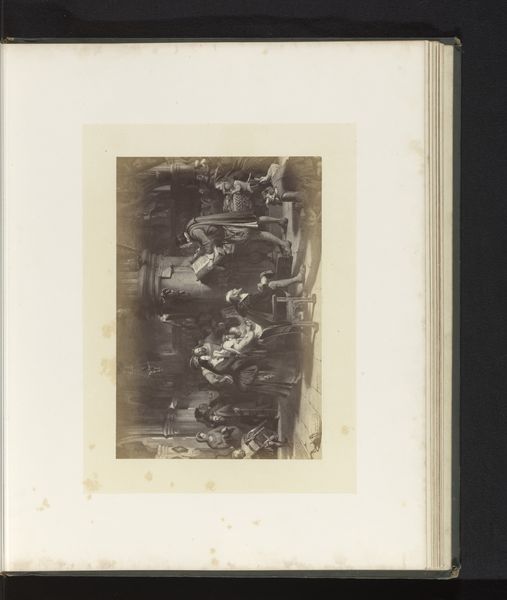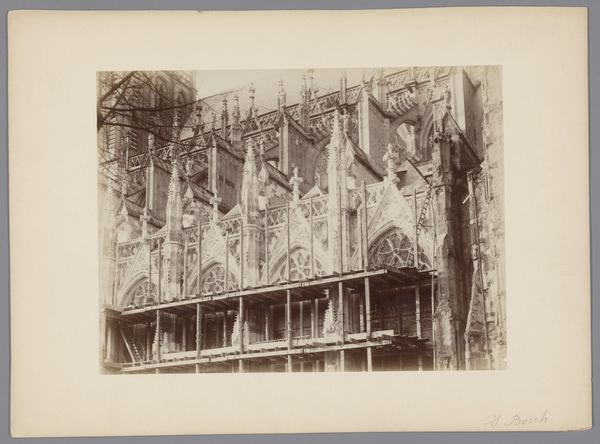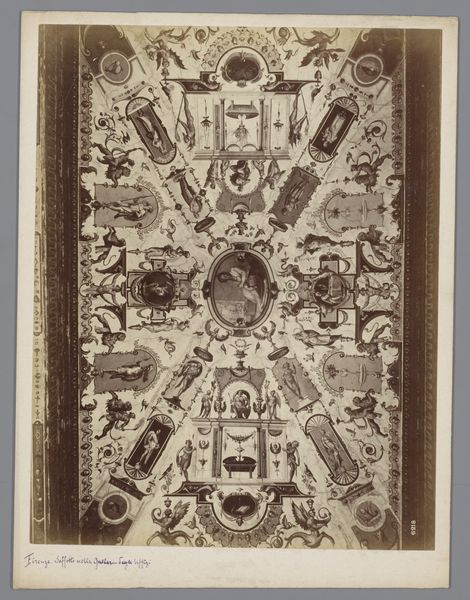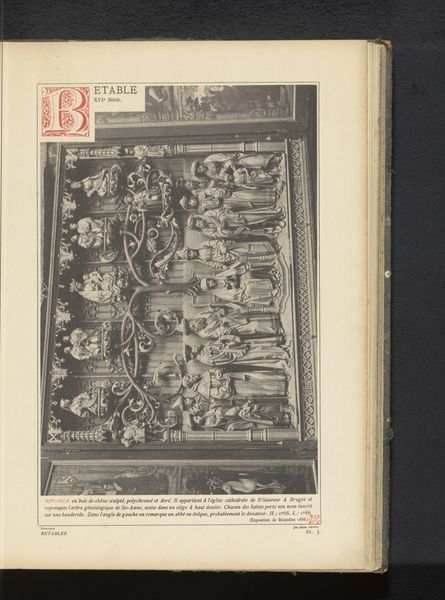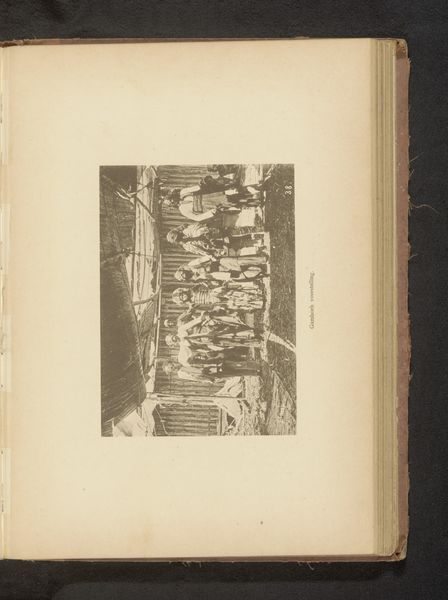
Fotoreproductie van een deel van de fresco's op het plafond van de Sixtijnse Kapel te Vaticaanstad door Michelangelo, voorstellende de Schepping c. 1875 - 1900
0:00
0:00
print, fresco, photography, gelatin-silver-print
# print
#
fresco
#
photography
#
gelatin-silver-print
#
history-painting
#
italian-renaissance
#
nude
Dimensions: height 316 mm, width 410 mm
Copyright: Rijks Museum: Open Domain
Editor: This gelatin silver print, taken sometime between 1875 and 1900, captures a section of Michelangelo's Sistine Chapel ceiling. Seeing it fragmented like this, stripped of its color, almost feels like an archaeological record. What do you see when you look at this reproduction? Curator: I see more than just a copy; I see a fascinating intersection of art, technology, and social context. This photograph, made decades after the original frescoes, makes this icon of religious art newly accessible to a wider, possibly secular, audience through mechanical reproduction. Does it democratize art, or diminish its aura? Editor: That's a good question. I guess it depends on the viewer. Did this kind of reproduction change how people understood the Renaissance? Curator: Absolutely. Photography helped disseminate images and ideas globally. But it's vital to consider *whose* perspectives were being circulated. This image, stripped of color, might have been understood through the lens of 19th century tastes and ideologies, potentially reinforcing existing power structures, through a visual record presented by specific, and certainly wealthy, social structures. How do we contend with the authority these kinds of records hold? Editor: So, it’s not just about appreciating the art, but also about questioning its role in shaping our understanding of history and who controls that narrative? Curator: Precisely! It encourages a dialogue, a re-evaluation of how images, even of masterpieces, participate in larger conversations about identity, power, and access. Consider also, how a modern audience would now view the naked human form on display, against the backdrop of modern religious and political sensitivities. Editor: This image now seems way more complex and relevant than just an old photograph. Curator: Indeed. By considering the socio-political layers of a reproduced image like this, it transforms from a historical document to a critical lens for viewing both the past and our present.
Comments
No comments
Be the first to comment and join the conversation on the ultimate creative platform.
